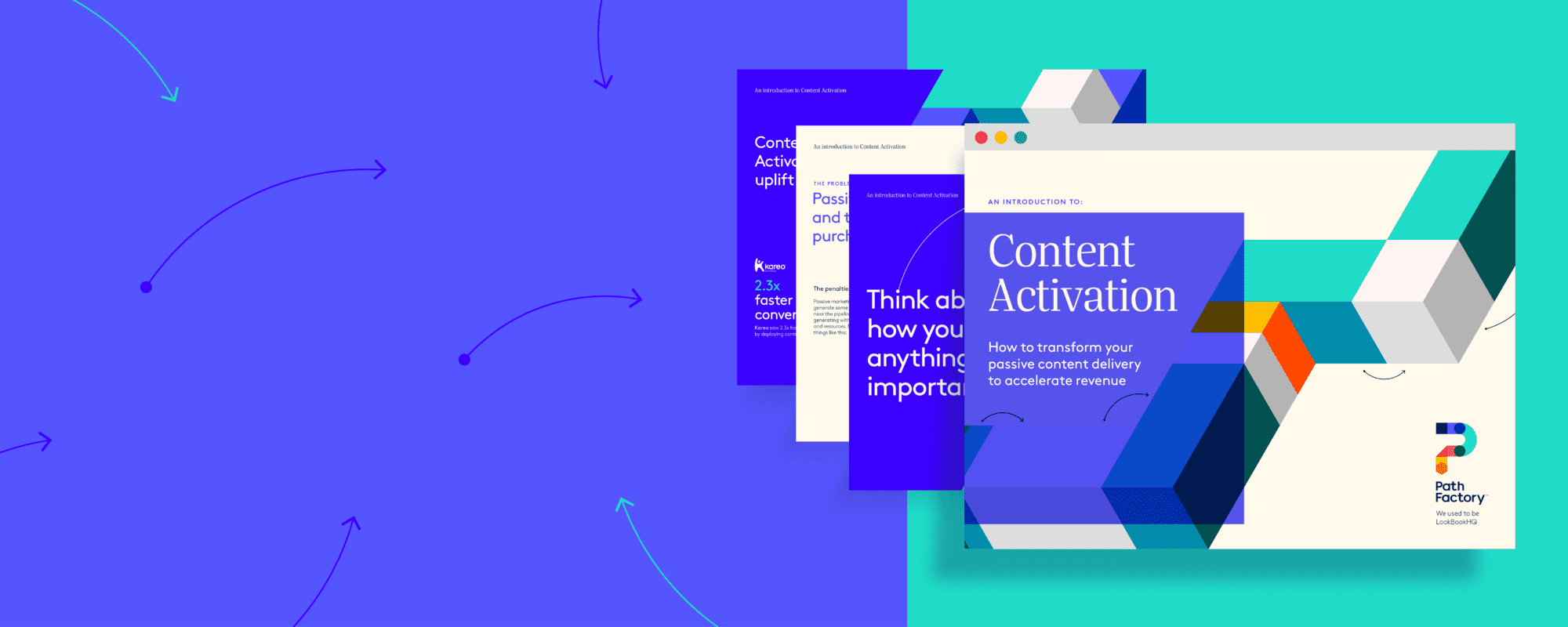
The Insight You Need To Understand Marketing Performance & Sales Readiness
Content Activation replaces a blind journey — one that takes place largely out of the view of the marketer — with a transparent journey, instrumented with sensors.
That means you get deeper, better, faster insight into your prospects, your content, your campaigns, and (if you’re doing account-based marketing) your target accounts. You can act on this insight to boost your performance and to improve the buying experience for your prospects.
The Content Activation approach is all about creating the conditions for goal-directed content binges, then detecting these intensive interactions to identify the hottest prospects. We call this urgent, real-time interest ‘Engaged Intent’ because it’s a lot deeper than weak intent signals like search behaviour, firmographic profiling, social media activity, or content downloads.
Engaged Intent is the demonstrated propensity to buy. When compared to all other lead scoring inputs, it proves to be the single best indicator of sales-readiness.
The 4 signals of Engaged Intent
Engaged Intent is the sum of 4 distinct signals:
A prospect’s appetite for information
How hungry are they for information on this topic?
Their specific interests
The topics and issues they care about right now.
Their self-education progress
Where they are on their purchase journey.
Their openness to your company
Their willingness to learn about this issue from your company.
Put together, these 4 signals add up to the most reliable signal that a prospect is ready to be sold to.
The best engagement metric is time
Traditional, passive marketing scores a click, form fill, or content download as a complete engagement. It’s all or nothing; yes or no. But you never know whether the prospect actually opened the PDF much less read it.
Content Activation uses the best indicator of Engaged Intent: the time they spend in your content tracks, consuming the content you prepared for them.
It’s a simple concept: A prospect who spends 17 minutes with 4 pieces of content is many times more likely to be a hot prospect than someone who just spends 40 seconds with a single piece.
Add this time signal to insight about the topic, content depth, and track ‘stickiness’, and you’ve got a rich indicator of each prospect’s potential.
How to act on Engaged Intent signals
Engaged Intent signals guide everything you do with the prospects in your funnel. They tell you:
Whether to engage more.
So you can focus your sales and marketing investments where they’ll make the most impact.
When to engage more.
Based on real-time behaviors that tell you when to act.
What kind of engagement is best.
What content type, channel, or format.
What content should drive the next engagement.
To systematically progress the conversation.
What topics and issues to focus on.
To stay in the prospect’s hot spot.
When to pass them to the sales team.
Knowing they’ll be far more likely to close.
What the sales conversation should be.
Helping the sales team pick up where the prospect left off.
Where insight comes from
Learning about each prospect and about the overall effectiveness of your content and campaigns depends on combining three data sources:
1. Engagement data
Your primary, behavioral data, showing you how much a prospect, an account, or an entire segment has been engaging with you, through which channels, and how much time they’re spending with your content. (So you can identify Engaged Intent.)
2. Content data
Data about the content that people are consuming and what it’s really about: the topics, the issues, the themes, and the level of expertise. (So you can understand their interests.)
3. Prospect data
Everything you know about each prospect you’re engaging with (firmographics, demographics, etc.). This comes from your own first-party data (in your CRM or marketing automation) as well as from third-party sources from data vendors like Demandbase, Kickfire, or Bombora. (So you can determine how well they fit your ideal prospect profile.)
Each of these sources is valuable. But taken together, they create an incredibly powerful source of insight to guide and improve your marketing performance and customer experience.
These are the kinds of questions a fully-instrumented Content Activation strategy can help you answer, including questions about prospects, accounts, content, and campaigns—each at an aggregated or drilled-down level:
CMO-level: The big picture
- Prospect: How many prospects are engaging with our content?
- Account: Are our named accounts engaging with our content?
- Content: Is it working?
- Campaign: Did that specific program or campaign work?
Mid-tier reporting: Aggregated data by content type, segment, etc.
- Prospect: Are senior decision-makers engaging with us?
- Account: Are we getting through to Big Pharma?
- Content: Do eBooks work? How does Topic X content compare to Topic Y content?
- Campaign: Did Campaign A do better than Campaign B this year?
Granular data: By prospect, account, piece…
- Prospect: Is Steve an MQL yet?
- Account: Is Merck ready for a sales call?
- Content: This whitepaper: did it work? That video: How’s it going?
- Campaign: What’s the uplift created by this topic for this account?
For more on Content Activation and the insight that it generates, check out the Introduction to Content Activation eBook:

